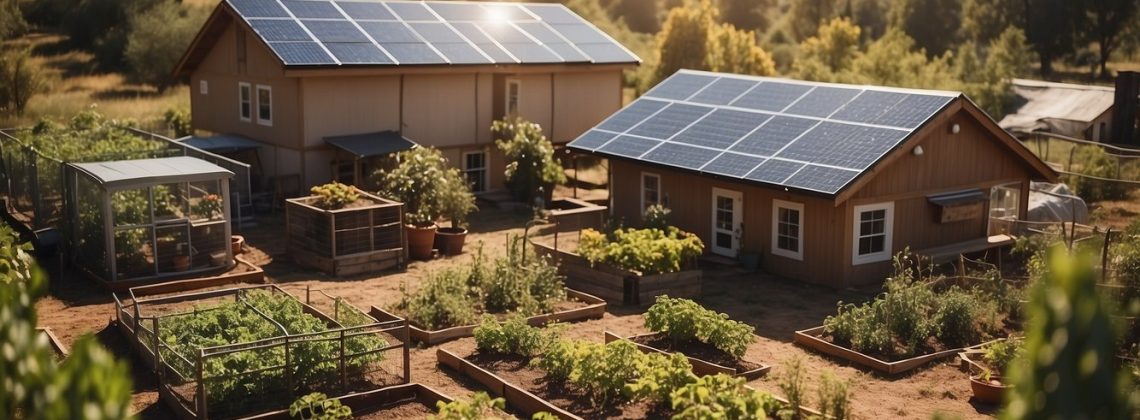
Planning a sustainable homestead requires thorough preparation and a vision for self-sufficiency that goes hand in hand with survival readiness. It revolves around creating a living space that not only shelters and sustains you but also works harmoniously with the environment. From selecting a property away from crowded cities to tailoring a layout that fits your specific needs, every step is crucial in crafting your safe haven. Pioneering your homestead involves securing and preparing the land to optimize its use for food production, water sourcing, and energy generation, thus ensuring a sustainable garden and infrastructure.
As you embark on this journey, building and managing a sustainable living system is essential. This system integrates the shelter, water, energy, and food production in a way that minimizes waste and promotes ecological balance. Learning to harness local materials for construction and cultivating a sustainable garden are integral parts of the process. Furthermore, community building and the acquisition of skills for homestead management form the bedrock of a resilient lifestyle. It’s about being prepared for anything, from the complexities of daily maintenance to the unpredictability of external challenges.
Key Takeaways
- A sustainable homestead is planned for self-sufficiency, ecological balance, and readiness for any situation.
- Key elements include optimizing land use, sustainable infrastructure, and self-sustaining food sources.
- Building skills and foster community relationships are essential for enduring success and resilience.
Laying the Foundation
Before you turn that dream of living off the land into reality, you need to lay a solid foundation. Proper planning and goal setting are the bedrock on which your sustainable homestead will be built.
Assessing Your Goals
First things first, why are you homesteading? Your goals will drive every decision, from the size of your land to the types of renewable energy you might use. Maybe you’re looking to be self-sufficient, reduce your carbon footprint, or prepare for any scenario that requires living off-grid. Jot down your non-negotiables and aspirations which may include:
- Sustainability: How will your homestead minimize impact on the ecosystem?
- Water: Do you have a reliable source for drinking and irrigation?
- Energy: Are you planning to hook up to the grid, go solar, or maybe wind?
When it comes to your goals, remember that sustainability isn’t just an ideal, it’s a practical guide for choosing land, water sources, and energy solutions that work for the long haul.
Homestead Planning Essentials
With your goals outlined, you can dive into the basics of homestead planning:
- Zoning and Legal Requirements: Research local zoning laws and regulations. You’ll need to know if your plans are permissible and what permits you’ll require.
Consideration Why It Matters Zoning Determines land use, animal keeping, etc. City Limits Can affect taxes and services available. Legal Requirements Building codes, permits, and inspections. - Land: How many acres do you need? This depends on your purpose. If you’re farming, you’ll need more than if you’re planning a small garden and a few chickens. Think about soil quality, access to water, and the work required to maintain the land.
- Water: Your life source. Ensure you have access or rights to a sustainable, clean water supply for drinking, sanitation, and farming.
- Energy: Consider your energy needs. Solar and wind are popular in off-grid setups; however, your choice may vary based on your location and budget.
- Budget: Hammer out a budget early on. This should cover your initial land purchase, construction costs, livestock, garden starts, and any renewable energy installations.
From assessing your goals to understanding the essentials of homestead planning, your focus on sustainability, water, land, and energy needs, along with a clear understanding of the local zoning laws and budgeting, are crucial in laying the foundation for your homesteading adventure.
Securing and Preparing the Land
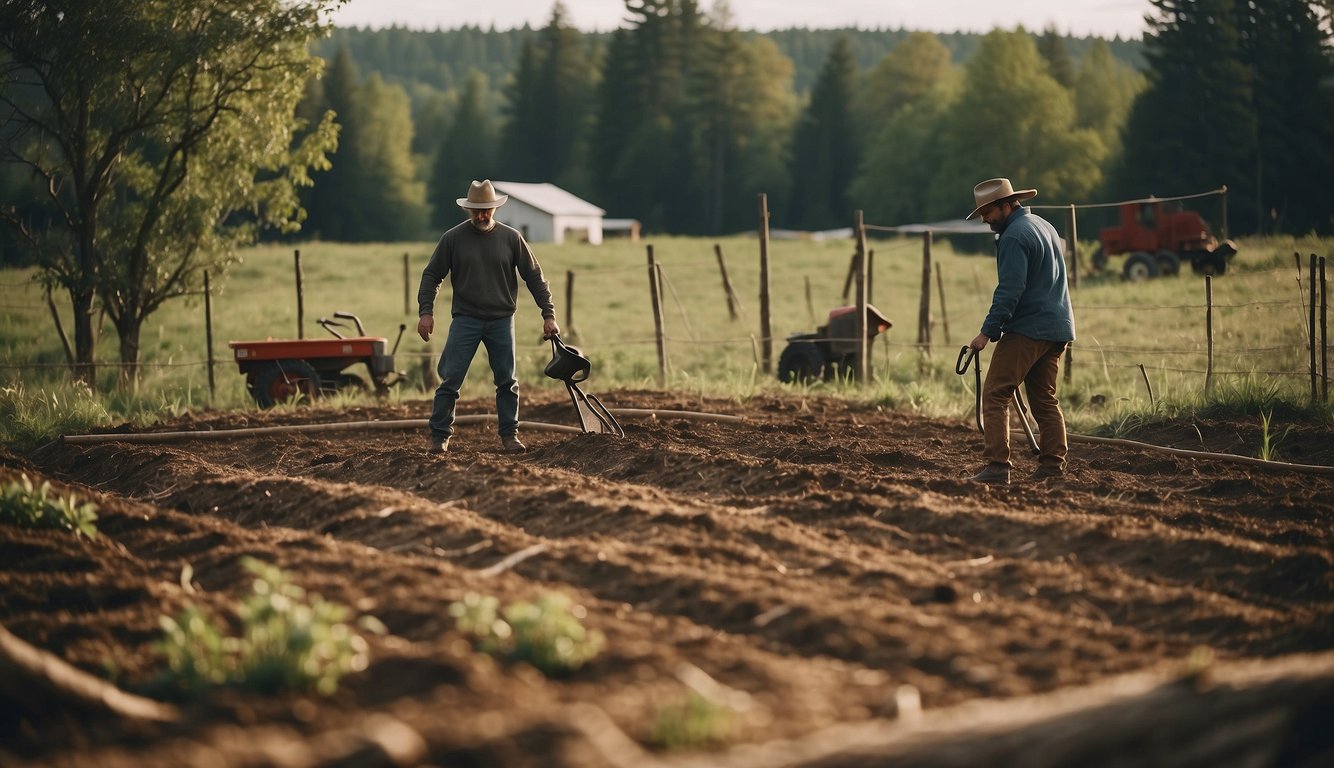
When you choose to start a homestead, the land is your foundation. You’ll want to ensure that it supports sustainable practices while being a safe haven. Let’s look at how you can evaluate land for sustainability, manage water effectively, develop necessary infrastructure, and build a shelter that stands the test of time.
Evaluating Land for Sustainability
When you’re looking at land, sustainability is key. Soil quality and fertility are your starting points because they’re critical for a sustainable garden. It’s not just about the here and now, but whether the land can support your homestead for generations. You’ll want to assess:
- Soil fertility: Is the soil rich in nutrients needed for plant growth?
- Local climate: Does it suit the types of crops you intend to grow?
- Natural resources: Are there forests or bodies of water that can be sustainably harvested or fished?
Get a soil test to know exactly what you’re working with and consider the behemoth task responsibly to ensure long-term viability.
Water Management Strategies
Next up, Water Management is non-negotiable – you’re going to need a reliable water supply. Here’s where you should focus:
- Rainwater harvesting: Set up systems to collect and store rainwater.
- Water system: Whether it’s a well, pond, or water catchment area, know where your water is coming from.
- Irrigation: Plan for a system that efficiently distributes water across your homestead.
Think about both quantity and quality of your water. You’d be wise to have tests done to ensure its safety for both consumption and crop irrigation.
Developing Infrastructure
With our homestead land and water figured out, it’s time to think about infrastructure:
- Energy: Consider renewable energy sources like solar or wind. It’s clean, sustainable, and, in the long run, easier on your pocket.
- Buildings and storage: Plan structures for storage, livestock, and equipment.
- Water system: Integration with your water management, your infrastructure should include how water is moved and stored.
Strategize how you’ll lay out the infrastructure in harmony with the natural landscape to minimize your environmental impact.
Building Efficient and Durable Shelter
Finally, shelter – it’s one of your basic human needs. Your homestead’s shelter should be:
- Insulated: Keep the heat in during winter and out during the summer.
- Energy-efficient: Use materials or designs that reduce the need for additional heating or cooling, lowering your energy consumption.
- Shelter options: Consider traditional cabin structures or newer, durable options like earth-sheltered homes.
Design your shelter to work with your environment, not against it. This approach gives you a head-start on sustainability and resilience. Choose materials that are long-lasting and provide excellent insulation for energy efficiency.
Sustainable Living Systems
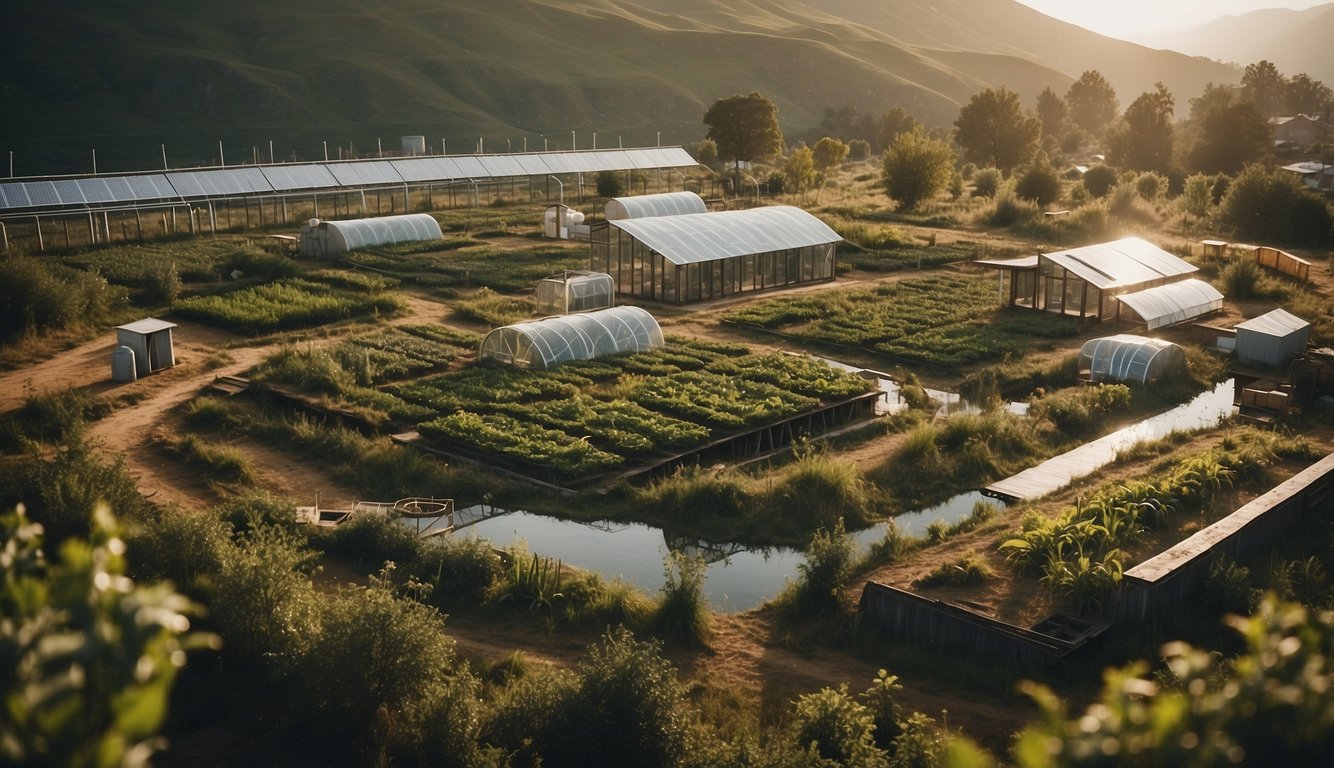
In building a sustainable homestead, it’s critical you set up systems that allow you to live independently and resiliently. Below are some key strategies for energy, water, and food production that are crucial for off-the-grid living.
Energy Solutions for Independence
To break free from the grid, renewable energy sources are your allies. Here are options you might consider:
- Solar Panels: Capture the sun’s power to generate electricity. Opt for a system with batteries to store energy for night time use.
- Wind Turbines: If your site is windy, these can complement solar setups, especially during overcast days or at night.
- Micro-Hydro Power: If you have a flowing water source, this could provide a continuous supply of power.
- Biogas: For a truly circular energy system, consider converting organic waste into biogas for heating and cooking.
Water Sources and Conservation
Access to clean water is foundational. Here’s how you can ensure a reliable supply:
- Rainwater Harvesting: Collect rainwater from your roof, store it, and use it for irrigation or, with proper treatment, as potable water.
- Natural Water Sources: Identify and utilize nearby streams or wells, but always include a robust filtration system.
- Greywater Systems: Recycle water from your sinks, showers, and washing machines for use in irrigation and reducing overall consumption.
Permaculture and Food Production
Permaculture principles help you cultivate a self-sustaining food system. A few pointers include:
- Gardening: Begin with a vegetable garden utilizing companion planting to increase yield and reduce pests.
- Crops and Fruit Trees: Allocate space for staple crops and an orchard for long-term food security.
- Edible Landscaping: Integrate food-producing plants into your overall landscaping plan.
- Composting: Turn your organic waste into nutrient-rich compost for your garden, completing the cycle of sustainability.
Food Security
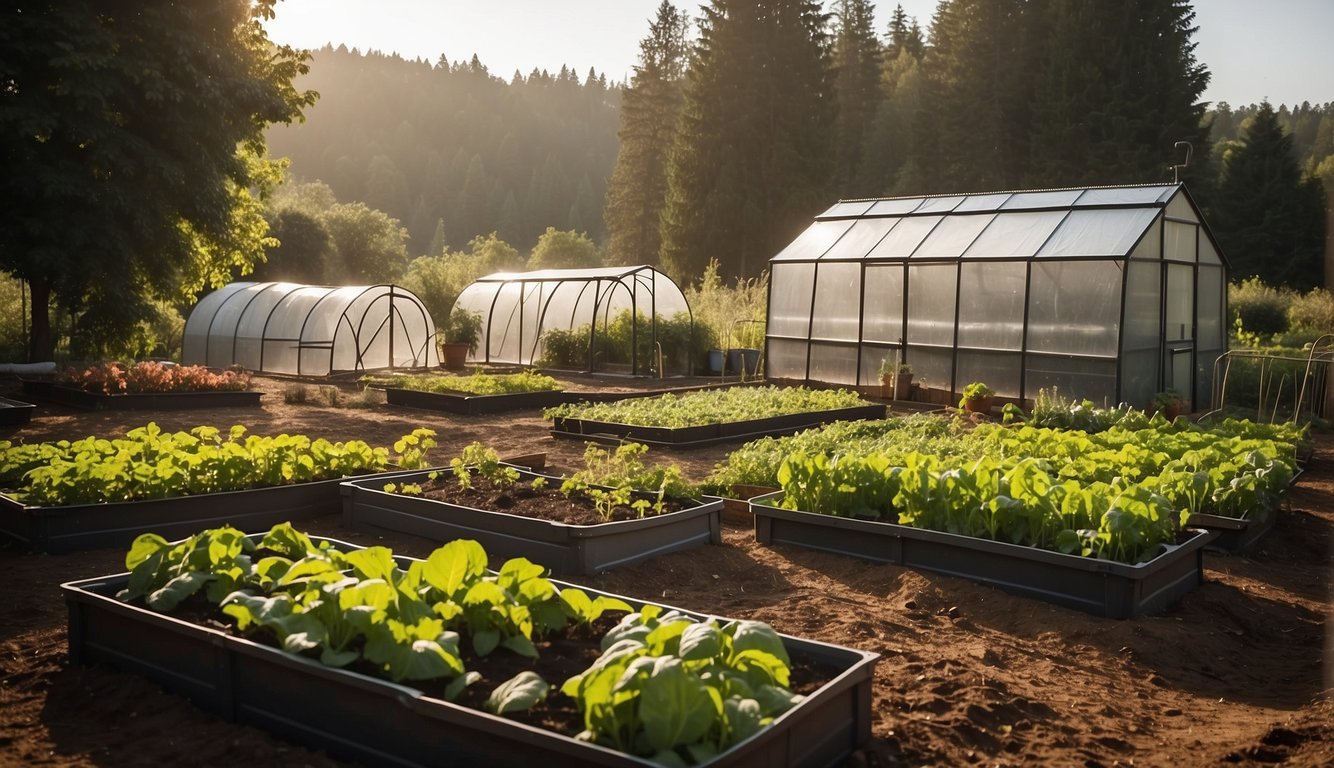
To ensure your homestead’s food security, focus on diversifying your food sources and mastering food preservation techniques. Your ability to provide for your own food needs is crucial in building a sustainable and self-sufficient lifestyle.
Raising Livestock and Animal Husbandry
You can raise a variety of livestock such as chickens, goats, and pigs for both meat and dairy. Animal husbandry requires understanding each animal’s needs, from shelter to feed. For example, chickens contribute eggs and meat, but they also offer pest control in your garden. Goats are versatile for milk and cheese, while pigs can help in land clearing and provide a substantial amount of meat.
Gardening and Growing Your Own Food
Start a garden tailored to your climate to grow vegetables, herbs, and fruit. Employ techniques like companion planting to enhance plant health and yields. Include staple crops, such as potatoes and legumes, that are nutrient-dense and easy to store. Consider establishing an orchard if space allows, for a longer-term investment in your food security.
Harvesting and Food Preservation
Once you harvest your crops, you need to preserve them to maintain a year-round supply. Methods include:
- Canning fruits and vegetables to keep them safe for consumption throughout the year.
- Utilizing a root cellar or other cool storage methods to extend the life of root vegetables and winter squashes.
- Drying or smoking meats and making preserves or pickles.
Aquaponics and Alternative Methods
Aquaponics is a combination of aquaculture and hydroponics, which can be a space-efficient method to raise both fish and plants. The fish waste provides nutrients to the plants, and the plants filter and clean the water, creating a sustainable ecosystem. Exploring other alternative methods, like vertical farming or hydroponics, can also increase your food security while conserving space and resources.
Homestead Management and Maintenance
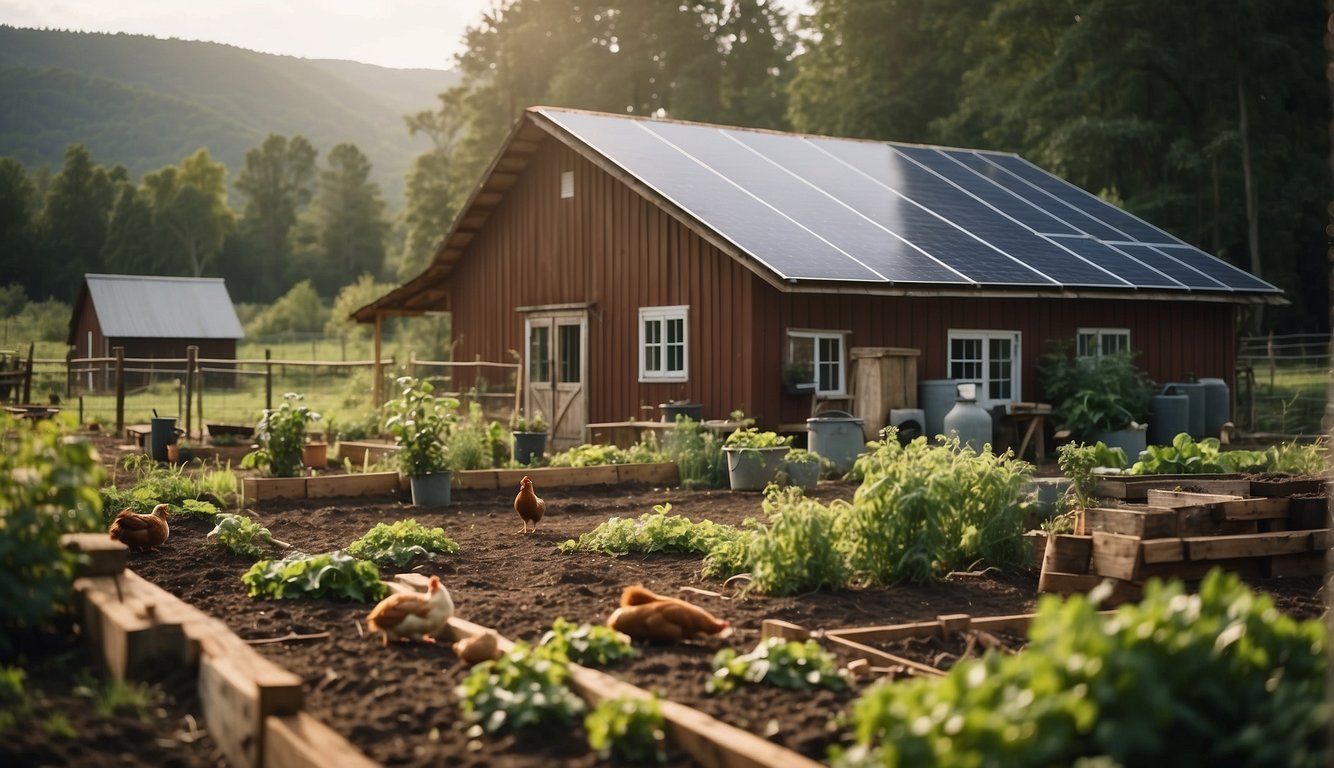
Effective homestead management is the backbone of sustainability. You’re not just building a self-sufficient haven; you’re committing to its upkeep, which ensures your homestead thrives year-round.
Maintaining the Homestead
To keep your sustainable garden and property in top shape, regular maintenance is key. Schedule tasks such as composting, garden bed rotation, and pruning. Maintain structures and repair any damages promptly to prevent issues from escalating. Here’s a quick checklist:
- Monthly: Check fences, outbuildings, and animal shelters.
- Seasonally: Clean and inspect your homestead’s water collection systems.
- Annually: Assess and replenish your soil to ensure your sustainable garden’s vitality.
Stocking Essential Supplies and Equipment
Your homestead’s success relies on being well-stocked. Aside from food resources, ensure you have the right tools for repair and maintenance. Here are the essentials:
- Tools: Shovels, hoes, repair kits, and saws for cutting firewood.
- Supplies: Seeds, fertilizers, and pest control methods.
- Safety Equipment: Fire extinguishers, first-aid kits, and personal protective gear.
Establish a rotation system for perishable stock to keep your supplies fresh.
Budgeting and Managing Finances
Budgeting is not the most exciting aspect of homesteading but it’s absolutely crucial. Track your spending on equipment, seed, feed, and property taxes to prevent overspending. A simple budget framework might look like this:
| Category | Monthly Allocation |
|---|---|
| Property Taxes | $X |
| Equipment | $Y |
| Seeds and Feed | $Z |
| Maintenance | $W |
Regularly review and adjust your budget to account for unexpected expenses and ensure financial sustainability. Remember, a penny saved on your budget can be a penny directed towards fortifying your homestead.
Skills and Community Building
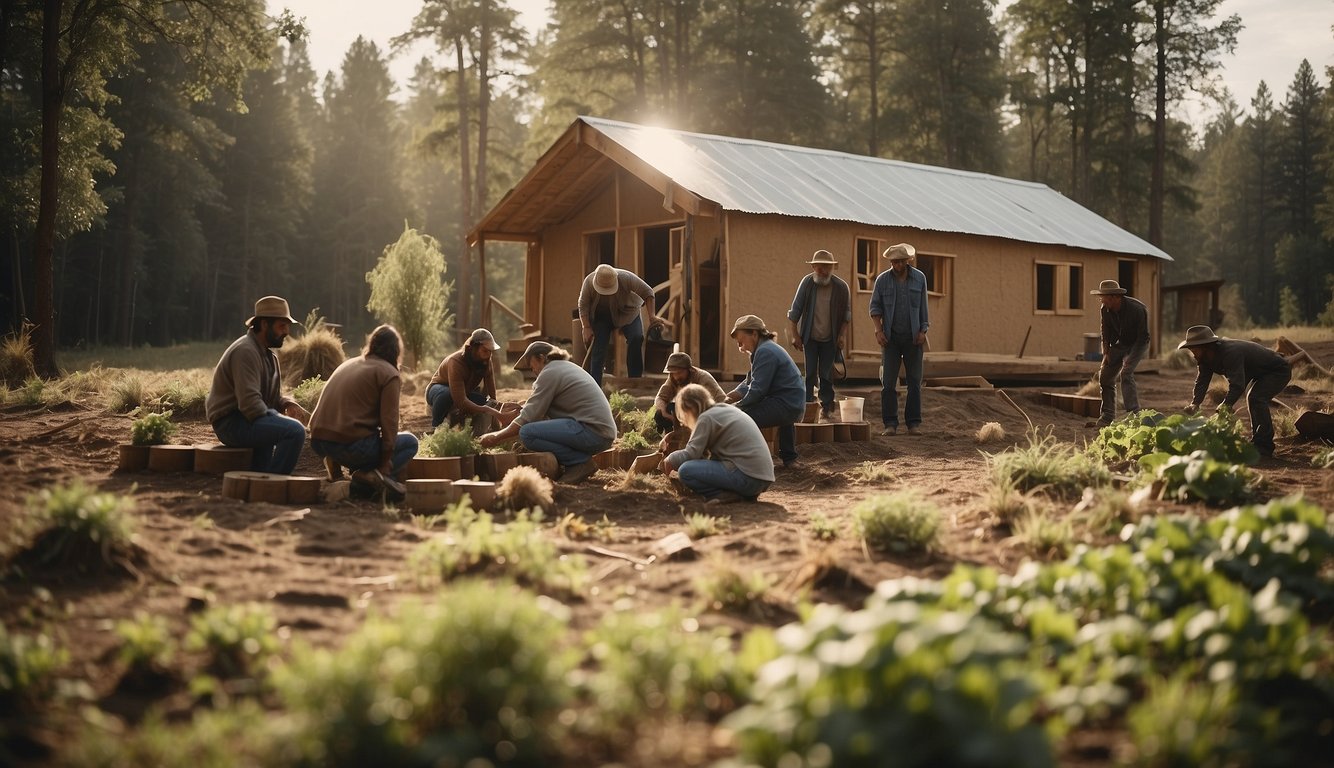
To build a sustainable homestead that’s ready for anything, you’ve got to hone some serious skills and get chummy with your neighbors. It’s all about being self-sufficient, staying healthy, and continuously learning while leveraging community strengths.
Developing Essential Homesteading Skills
First things first, you need a skill set that’s as robust as a well-rooted oak tree. Start with the basics: learn how to grow your own food and maybe even hunting to ensure you’ve got all your food sources covered. Get comfortable with preparation techniques—canning, drying, smoking—you name it. Don’t forget trapping and harvesting; knowing how to safely set a trap or glean crops can keep your pantry full year-round.
Research is key, so head to the local library or dive into online forums to get the lowdown on homesteading skills. You don’t need to be an expert overnight, but building proficiency over time will pay off in spades.
Engaging with the Community
Your homestead doesn’t exist in a vacuum. Connect with your community to create a strong network. Reach out to local farmers—they’re a goldmine of knowledge and often up for bartering goods or services. Establish a give-and-take relationship where skills and support can be exchanged freely.
Consider setting up or joining a community garden. It’s a perfect place for hands-on learning and sharing tips on what’s working (or not) in your area.
Education and Continuous Learning
The learning never stops. Seriously, there’s always something new popping up that can help you become more self-sufficient. Whether that’s a tweak in your gardening technique or a better way to track weather patterns, staying on top of research is crucial.
Keep an eye out for workshops or talks held by homesteading experts. If your pockets are jingling with a little extra change, think about enrolling in a more formal course that can catapult your knowledge forward.
Health and Well-Being
Homesteading is as much about cultivating a healthy lifestyle as it is about cultivating the land. Make sure you’re looking after your health and well-being. This not only means eating healthy and staying active but also managing stress. Remember, a sustainable homestead thrives on a sustainable you.
Brush up on herbal remedies and traditional healing skills. These can be indispensable, especially if professional medical help is a trek away. Regular exercise, like chopping wood or working the land, keeps you fit and ready for the daily demands of homesteading life.
Preparing for the Unexpected
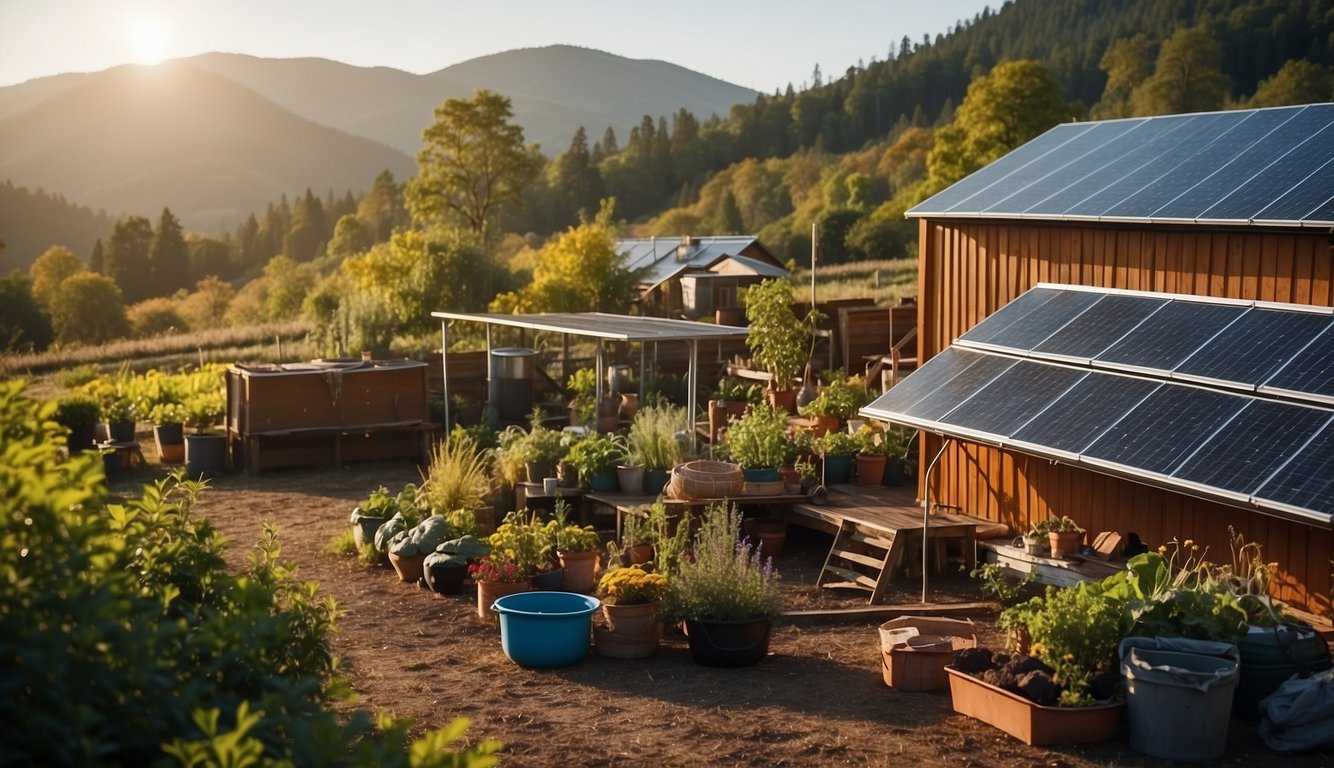
When you’re building a sustainable homestead, it’s crucial to have a plan that addresses disasters and crises head-on. Think about what your homestead can face, from hurricanes to civil unrest, and how you’ll ensure your survival and safety.
Survival Readiness and Emergency Planning
First things first: have a plan for every scenario. Map out potential threats—like war or natural disasters—and have clear steps you’ll take in each case.
- Create an Emergency Response Plan:
- Identify safe havens in and around your property.
- Establish clear communication channels for when traditional systems fail.
- Keep emergency kits with medical supplies, tools, and essential documents ready.
Food and Water Security Measures
Next up, let’s talk about keeping your belly full and staying hydrated. These are non-negotiables.
Store and Preserve Food:
- Stockpile non-perishable food items.
- Learn preservation methods like canning, smoking, and dehydrating.
Safeguard Water Resources:
- Have multiple water collection systems (rain barrels, water wells).
- Invest in filtration and purification systems to ensure water is safe to drink.
Shelter and Safety Strategies
Your homestead is your castle—make it safe.
Reinforce your Shelter:
- Build to withstand extreme weather: properly insulated walls, storm shutters, durable roofing.
- Fireproof your home and outbuildings, especially in fire-prone areas.
Plan for Protection:
- Set up perimeter defenses to discourage intruders.
- Design a panic room or a hidden spot for times of civil unrest.
Sustainable Adaptations to Climate Change
The weather’s changing and it’s changing fast. Your homestead should change with it to stay ahead.
Eco-friendly Practices:
- Integrate renewable energy like solar panels or wind turbines.
- Use sustainable farming practices that build soil resilience and preservation.
Be Observation-Ready:
- Keep an eye on climate trends and adapt your agricultural planning accordingly.
- Develop a network with nearby homesteaders to share information and resources.
Conclusion
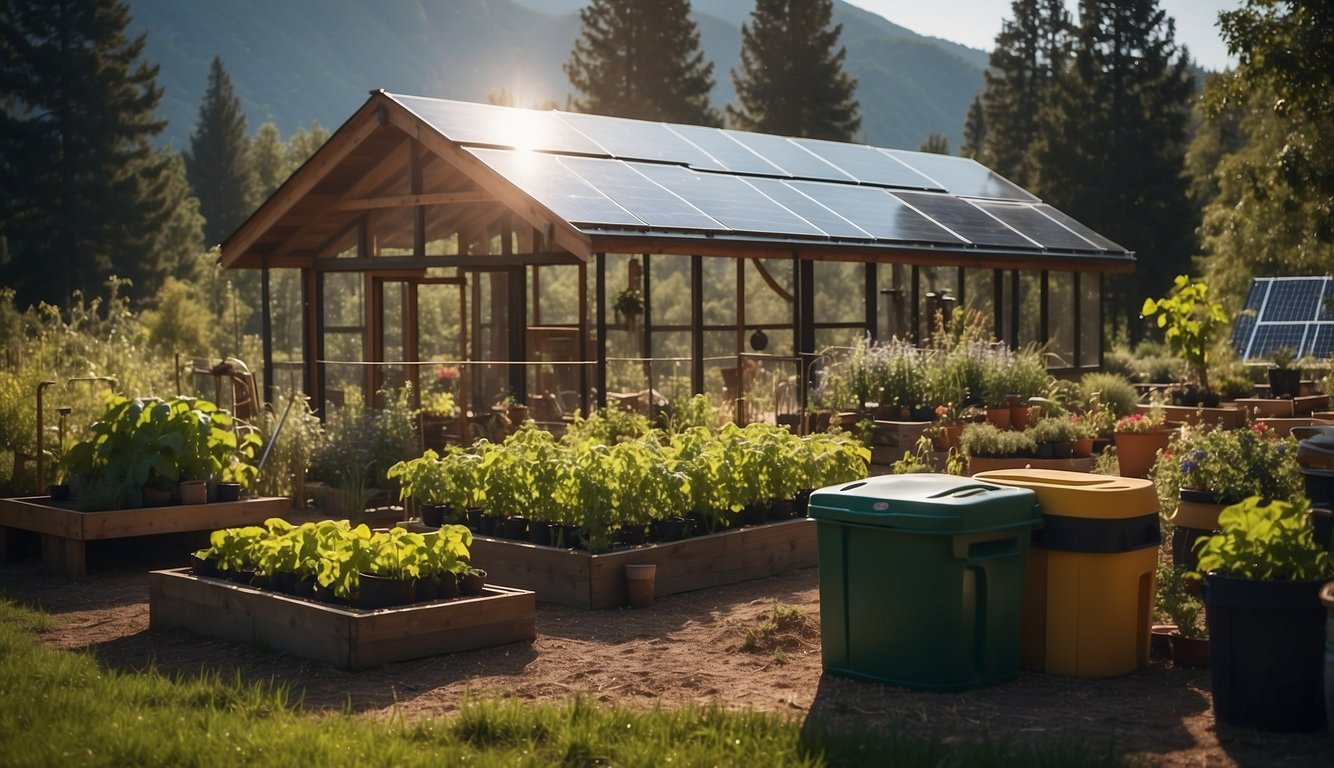
Creating a sustainable homestead is within your reach. You’ve seen that with thoughtful planning and a step-by-step approach, self-sufficiency and survival readiness can progressively become a reality. Here’s a quick refresher:
- Zone Smart: Break down your acreage into designated areas for gardening, livestock, living spaces, and more. This organization is key for efficiency and productivity.
- Garden Gold: Maximize your food production. Cultivate a variety of crops to ensure a year-round supply and invest time in learning about permaculture principles to enhance your yield.
- Animal Allies: Select livestock that make sense for your space and needs. Chickens, goats, or bees can add immense value without requiring vast acreage.
- Resourceful Resilience: Lean on local resources for construction materials and community knowledge. This not only saves money but also helps you build a network of support with neighbors.
Remember, the journey of homesteading is continuous. Each day, you’ll learn something new, and gradually, you’ll become more adept at living off the land. Embrace this learning curve and let your homestead thrive as a testament to your hard work and vision.
Frequently Asked Questions
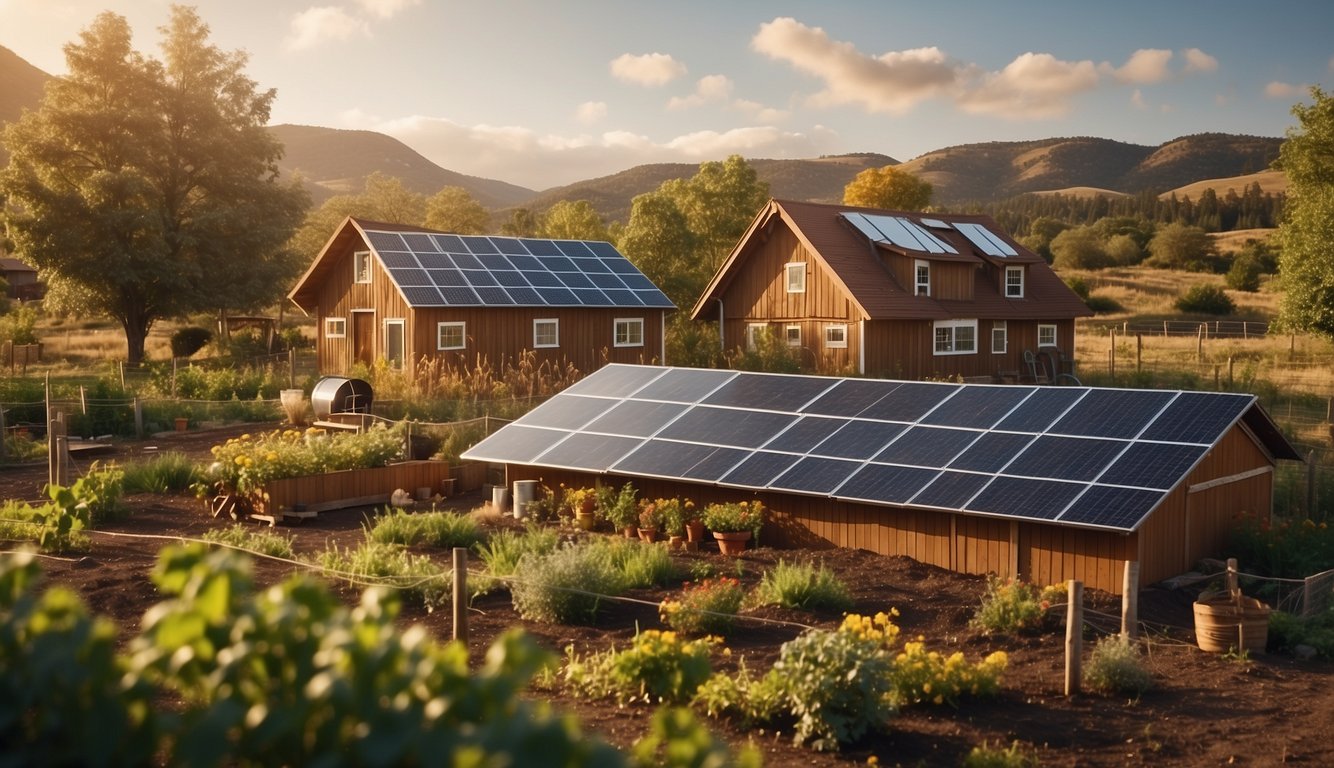
Navigating the world of homesteading can be challenging, but with the right knowledge, you can make informed decisions that set the foundation for a resilient and self-sufficient lifestyle.
What are the essential steps to initiate a self-reliant homestead?
You’ll want to start by carefully planning your journey, understanding your goals, and assessing your resources. Begin with a small, manageable project, and slowly build up your skills and homestead infrastructure.
Can you have a homestead that’s fully sustainable, and what does it involve?
A fully sustainable homestead involves creating systems that allow you to meet your needs without external inputs. This means establishing renewable energy sources, growing your own food, and using water and waste management practices that support your land’s health.
What’s the game plan for transitioning to a homestead lifestyle?
Transitioning to homesteading requires a comprehensive plan that includes acquiring the necessary knowledge, skills, and resources. You should also connect with the homesteading community for support and consider how you’ll balance homesteading with other responsibilities.
What are some creative strategies for homesteading when funds are limited?
Use local materials for building structures, barter with neighbors, and invest in multipurpose tools. Focus on projects that offer a high return on investment and learn to DIY whenever possible to keep costs down.
What are the key features to designing a homestead for long-term sustainability?
Prioritize a design that includes renewable energy, rainwater harvesting, food production, and efficient housing. Incorporate permaculture principles to work with the natural ecosystem rather than against it.
How do you manage water, waste, and energy on an eco-friendly homestead?
Implement rainwater collection systems, compost waste to improve soil fertility, and look into solar or wind power for renewable energy. Develop plans to recycle and reuse as much as possible to minimize your ecological footprint.

Leave a Reply